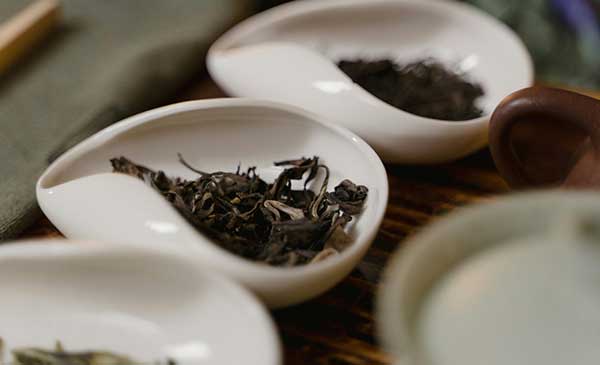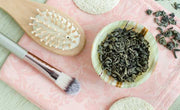Oolong vs. Green Tea: Which Should You Choose?

Tea is more than just a comforting beverage—it’s a cultural ritual, a wellness booster, and for many, a daily necessity. Among the most popular varieties are green tea and oolong tea, both celebrated for their unique flavors and wide-ranging health benefits.
But while they might look similar at a glance, these two teas differ significantly in processing, taste, antioxidant profile, and even how they affect your body and mind.
If you've ever wondered whether to reach for a cup of green or oolong, this in-depth comparison will help you make an informed (and flavorful) choice.
What Are Green Tea and Oolong Tea?
Green Tea: The Gentle Powerhouse
Green tea is made from the Camellia sinensis plant and undergoes minimal oxidation. The tea leaves are quickly steamed or pan-fired after picking to preserve their fresh, grassy flavors and high levels of catechins—powerful antioxidants that contribute to many of green tea’s famed health benefits.
Green tea is often associated with:
- Astringent, vegetal flavor profiles
- Light to medium body
- Common varieties: Sencha, Matcha, Dragon Well (Longjing), Gyokuro

Oolong Tea: The Balanced Beauty
Oolong leaves also comes from the Camellia sinensis plant, but it falls somewhere between green and black tea in terms of oxidation—typically between 10% and 80%. This semi-oxidized processing gives oolong a much more complex and layered flavor, ranging from floral and fruity to toasty and full-bodied.
Delicious flavors of oolong to explore:
- Oolong Milk
- Peach Oolong Tea
- Blackberry Sage Oolong
- Maharaja Chai Oolong
- Formosa (Almond) Oolong
- Darjeeling Oolong
- Jade Oolong
Flavor Profile: Fresh vs. Complex
When it comes to taste, green tea and oolong occupy different ends of the flavor spectrum.
- Green tea is fresh, grassy, and light, sometimes with marine or nutty undertones depending on how it's processed. Its subtlety makes it ideal for those who prefer gentler teas or want something refreshing without bold flavor.
- Oolong tea, on the other hand, is richer and more complex. In a cup of oolong tea, you might detect floral notes, roasted nuts, honey, or even stone fruit, depending on the oxidation level. Some oolongs, especially those that are roasted, have a warm, toasty edge that green tea lacks.
If flavor depth is your goal, oolong wins. But if you enjoy lighter, more delicate teas, green tea might be your preferred sip.

Health Benefits Compared
Both oolong and green tea offer impressive health benefits, largely due to their antioxidant content, but they shine in slightly different ways.
Green Tea Health Benefits
Green tea is rich in catechins, especially EGCG (epigallocatechin gallate), which is associated with:
- Boosting metabolism and fat oxidation
- Supporting cardiovascular health
- Improving brain function
- Reducing inflammation
- Lowering the risk of certain cancers
Additionally, matcha—a powdered form of green tea—delivers a higher concentration of antioxidants because the entire leaf is consumed.
Benefits of Oolong Tea
Oolong tea contains a mix of catechins, theaflavins, and thearubigins, offering a unique blend of health advantages:
- Supports weight management by improving fat metabolism
- Enhances mental alertness and focus
- Promotes healthy skin (thanks to polyphenols)
- Regulates blood sugar levels
- May reduce cholesterol and improve heart health
Oolong also contains L-theanine, an amino acid that promotes relaxation without drowsiness, similar to green tea but with a different balance due to its semi-oxidized nature.
Bottom Line:
Green tea may edge out oolong in terms of antioxidant density, but oolong’s broad profile of compounds offers more nuanced, long-term wellness benefits.

Caffeine Content: A Gentle Boost or Moderate Kick?
Caffeine is often a deciding factor when choosing between types of tea. While both green and oolong tea naturally contain caffeine, the amount of caffeine vary based on processing and brewing.
- Green Tea: 20–45 mg of caffeine per 8 oz cup
- Oolong Tea: 30–70 mg of caffeine per 8 oz cup
This means:
- Green tea offers a gentler boost, making it suitable for those sensitive to caffeine or drinking it later in the day.
- Oolong can provide a moderate lift in energy and focus, perfect for a mid-morning or afternoon pick-me-up.
Matcha, because it uses the whole leaf, contains more caffeine than regular steeped green tea—closer to 60–80 mg per cup.
Weight Loss and Metabolism: Which is Better?
Both teas have been linked to enhanced fat burning and metabolism due to their caffeine and polyphenol content.
- Green tea, particularly matcha, is often marketed as a weight loss tea because it increases thermogenesis (the body’s rate of burning calories).
- Oolong tea also helps with weight control, with studies showing it can increase fat oxidation by up to 12% after drinking.
Some research suggests that oolong may be more effective in fat breakdown, while green tea may be better at preventing fat gain.

Skin and Beauty Benefits
Drinking tea has long been associated with beauty routines, and both green and oolong tea bring plenty to the vanity table.
Green Tea for Skin
- Fights acne and inflammation
- Helps reduce signs of aging due to high antioxidants
- Protects against UV damage
Oolong Tea for Skin
- Improves skin tone and clarity
- May reduce eczema symptoms
- Boosts hydration and detoxification from within
If your skin needs calming and antioxidant repair, green tea is great. For glow and complexion clarity, oolong is a strong contender.

Brewing and Preparation
Proper preparation can make or break your tea experience.
Brewing Green Tea
- Temperature: 160–180°F (70–80°C)
- Time: 1–3 minutes
- Tip: Too hot water or over-steeping can make green tea bitter.
Brewing Oolong Tea
- Temperature: 180–200°F (80–93°C)
- Time: 3–5 minutes
- Tip: Oolong is more forgiving and often improves with multiple infusions.
Some oolongs can be steeped 3–5 times, with each infusion unlocking new layers of flavor. Green tea is more delicate and typically best enjoyed in 1–2 steeps.
Cultural and Historical Roots
Both teas have rich histories that reflect their origins and ceremonial significance.
- Green tea has ancient roots in China and Japan and is often associated with Zen practices, meditation, and traditional Japanese tea ceremonies.
- Oolong tea originated in China’s Fujian province and is deeply tied to gongfu tea ceremonies, which emphasize slow brewing, patience, and appreciation of flavor complexity.
Choosing between them can be as much about honoring a tradition as enjoying a taste.
Sustainability and Sourcing
Green tea and oolong both vary greatly depending on where and how they’re grown.
- Green tea from Japan tends to be shaded (like Gyokuro and Matcha), which boosts chlorophyll and amino acid content.
- Oolong grown in the Wuyi Mountains or Taiwan (like high mountain oolong) often involves hand-picking and traditional processing.
So… Which Should You Choose?
It all depends on what you’re looking for:

Final Thoughts
In the end, there’s no winner—only your personal preference. Whether you’re drawn to green tea for its antioxidant punch and clarity, or enchanted by oolong’s floral depth and balanced energy, both teas offer something uniquely valuable.
So why choose just one? Try both and let your taste buds—and your body—decide. You might just find that the real winner is your daily tea ritual.






